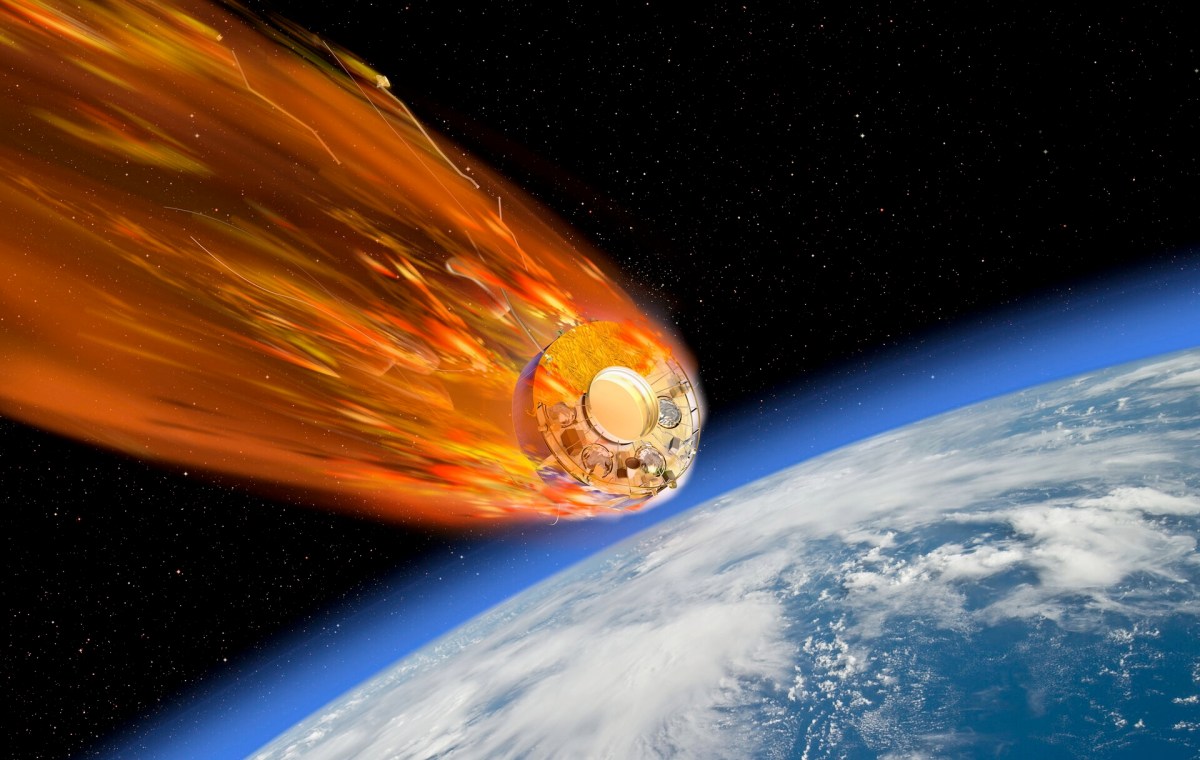WASHINGTON — The European Space Agency successfully deorbited the first of four Cluster space science satellites Sept. 8, performing a first-of-its-kind “targeted reentry” over the South Pacific.
The satellite, called Cluster 2 or “Salsa,” reentered a 2:47 p.m. Eastern in the South Pacific west of Chile. Spacecraft controllers had targeted this area to minimize the risk from debris surviving reentry.
“Salsa’s reentry was always going to be very low risk, but we wanted to push the boundaries and reduce the threat even further, demonstrating our commitment to ESA’s Zero Debris approach,” Rolf Densing, director of operations at ESA, said in a statement. That approach sets a goal of reducing debris from ESA missions to zero by 2030 through measures like deorbiting spacecraft at the end of their missions.
ESA called the spacecraft’s reentry the first such “targeted” reentry where the spacecraft’s reentry time and location were controlled, rather than the uncontrolled reentry of a defunct satellite. That was enabled by the spacecraft’s highly elliptical orbit, an unusual orbit designed to allow the Cluster satellites to study the Earth’s magnetosphere since their launch in 2000.
“For a circular orbit we cannot do this kind of targeted reentry we are doing here,” said Benjamin Bastida-Virgili, space debris systems engineer at ESA, during a Sept. 6 briefing. Controllers took advantage of perturbations from the sun and moon that caused the spacecraft’s perigee to naturally descend and used maneuvers to adjust the orbit to target a reentry over the South Pacific.
An aircraft captured this image of Salsa (bright dot) reentering Sept. 8 over the South Pacific. Credit: ESA/ROSIE/University of Southern QueenslandThat targeted reentry, intended to reduce any risk from falling debris, also provided a research opportunity. “By studying how and when Salsa and the other three Cluster satellites burn up in the atmosphere, we are learning a great deal about reentry science, hopefully allowing us to apply the same approach to other satellites when they come to the end of their lives,” Densing said in the statement.
For Salsa, ESA flew an aircraft out of Easter Island to attempt to observe the reentry. The agency released Sept. 9 one image from that plane, showing the spacecraft as a bright dot in a daytime sky as it reentered.
Bastida-Virgili said the plane carried 16 instruments to monitor the reentry. “We will better understand what’s happening on this reentry, how the satellite burns, what is burning at which moment and which altitude,” he said. That information will be used to refine satellite breakup models.
ESA will have an opportunity to further test and refine those models. Salsa is the first of four Cluster satellites that will reenter, with the other three — Rumba, Samba and Tango — planned to perform their own targeted reentries between October 2025 and August 2026. “We have the possibility to reproduce this again and again and see how good our models are compared to what we observe in reality,” he said.
